Our third day in Egypt took us to Giza, directly across the Nile River from Cairo, where we saw pyramids and sphinxes. Pyramids were built as temples to the gods to glorify life after death, most famously as monuments to house the tombs of the pharaohs. There are 118 pyramids in Egypt. In Egyptian culture, a sphinx represents the solar deity and symbolizes royalty and sacred status. There are thousands of sphinxes in Egypt. Their purpose is to guard the tombs and to ward off tomb raiders. Given the number of tombs available for tours, that didn’t work out too well.
It was date season, and we saw lots of ripe dates hanging from the date palm trees all along the route to Giza. Dates are a popular and important source of food in this part of the world because they dry and store well and, best of all, they’re said to be delicious. (I don’t like dates. Just give me some raisins, please.) Egypt produces more dates than any other country in the world.

The first pyramid we saw today was the Pyramid of Djoser (silent “D”). When it became visible from our bus windows, there was an audible, excited intake of breath from the group. A pyramid! This is what we came to Egypt to see! The Djoser Pyramid is usually referred to as the Step Pyramid, for obvious reasons. (See the photo below.)
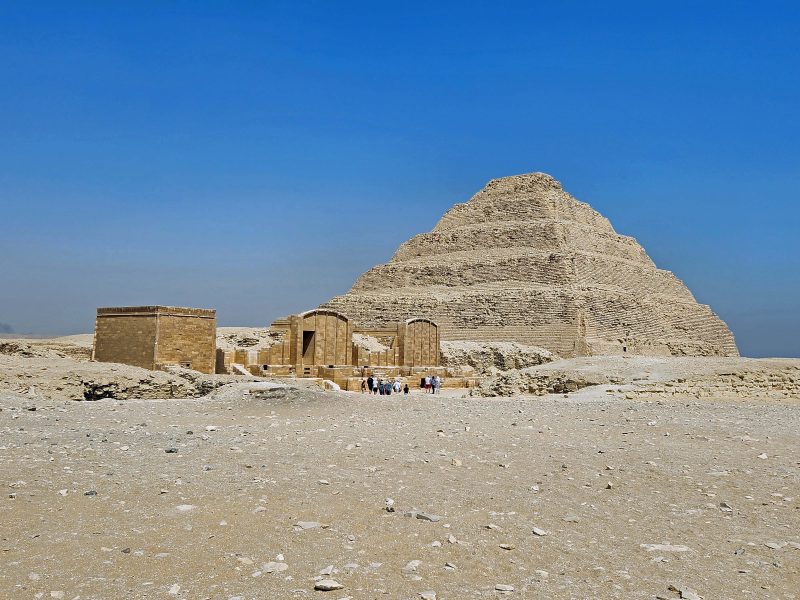
The Step Pyramid was designed by the first named architect, Imhotep, around the 27th century BCE. Imhotep used stone in place of mud brick, wood, and reeds. It was the first pyramid and the first stone building in history. The burial chamber is at the end of a central shaft about 130 feet below the surface of the ground. The pyramid was part of a complex described as a “vast city of the dead” with a mile-long wall that was originally 34 feet high. Imhotep was later worshipped as a god for his remarkable craftsmanship in this complex, and today, this pyramid is the oldest important stone building in Egypt. The photo below shows where we entered the tomb of the Step Pyramid. There are wooden crossbars on the ramp to keep people from slipping on the steep ramp as they enter and exit the tomb.
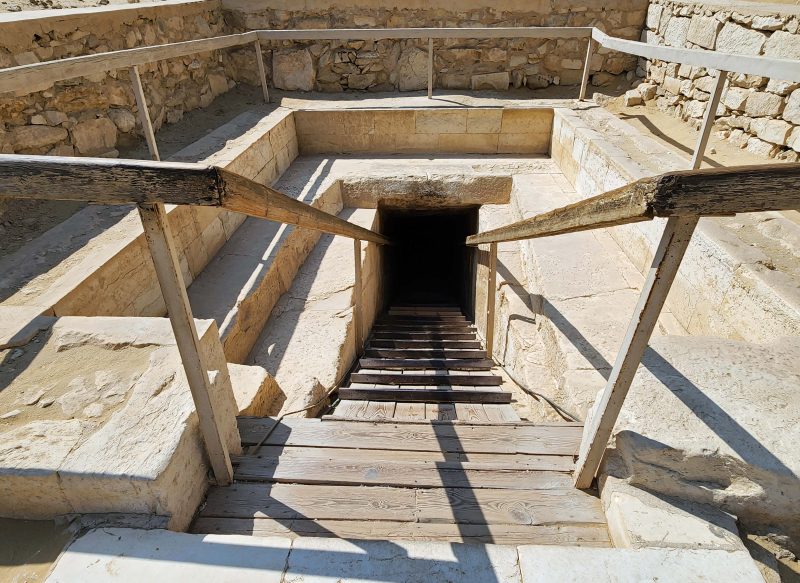
After we reached the bottom of the ramp and some stairs, we walked through this tunnel/hallway, . . .
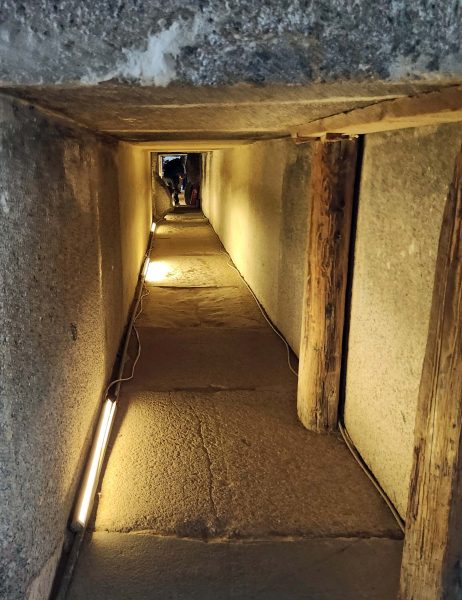
. . . to the central part of the tomb.

These are some of the hieroglyphics we saw inside the tomb.
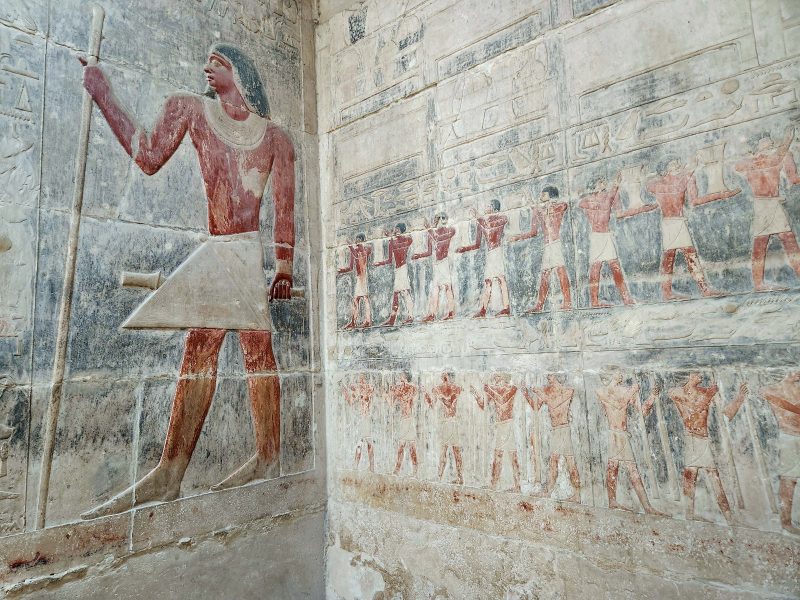
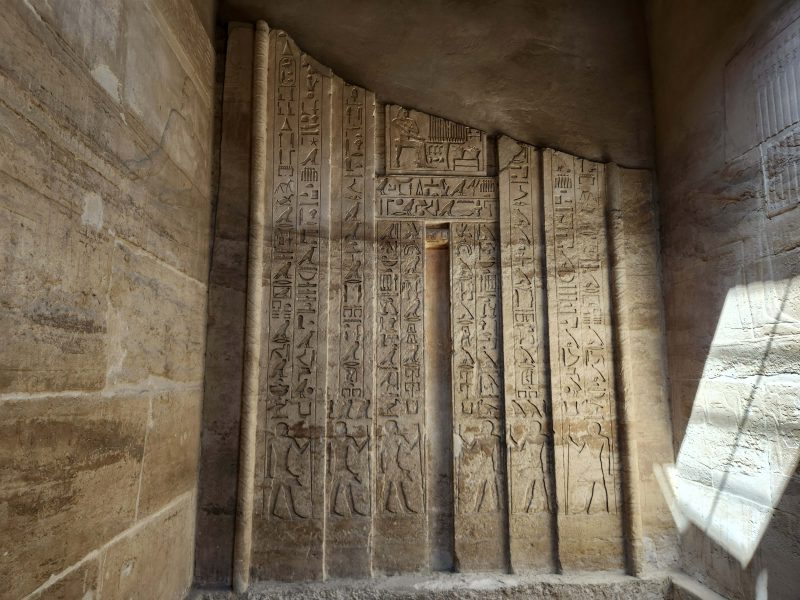
The Collonade Entrance to the Djoser Complex was originally lined with 20 pair of columns. This was the first appearance of stone columns in architecture—also designed by Imhotep.
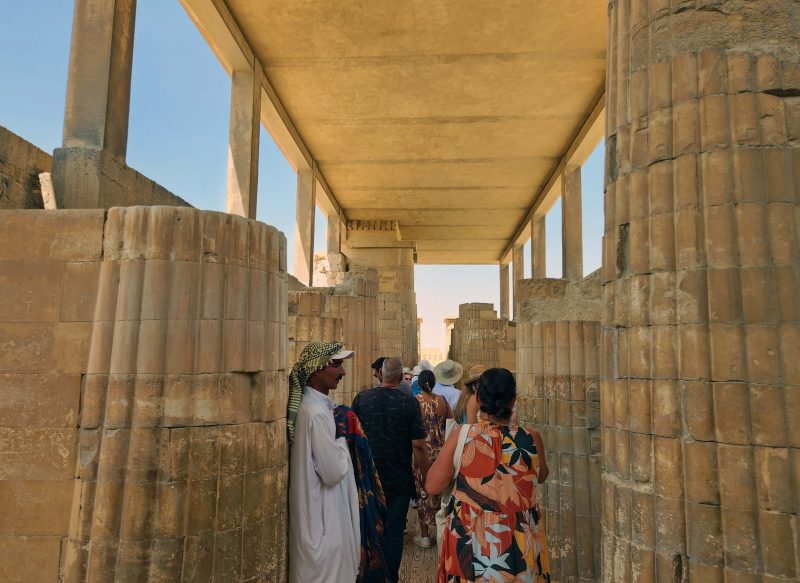
Ted and I thought Jerusalem was hot, but that was before we came to Egypt. Don’t tell me about dry heat! When the temperature is above 100 degrees and the sun is reflecting off the rocks and the sand, I think dry heat might be worse than heat with high humidity.
We had a chance to cool off in our air-conditioned bus as we left the Step Pyramid and drove to a rug-weaving factory. The factory hires children to do the weaving because these silk rugs have 400 stitches per square inch, and the children have small fingers that fit more easily between the vertical threads. (No one mentioned child labor laws and I wasn’t going to ask with all the security and rifles around.)
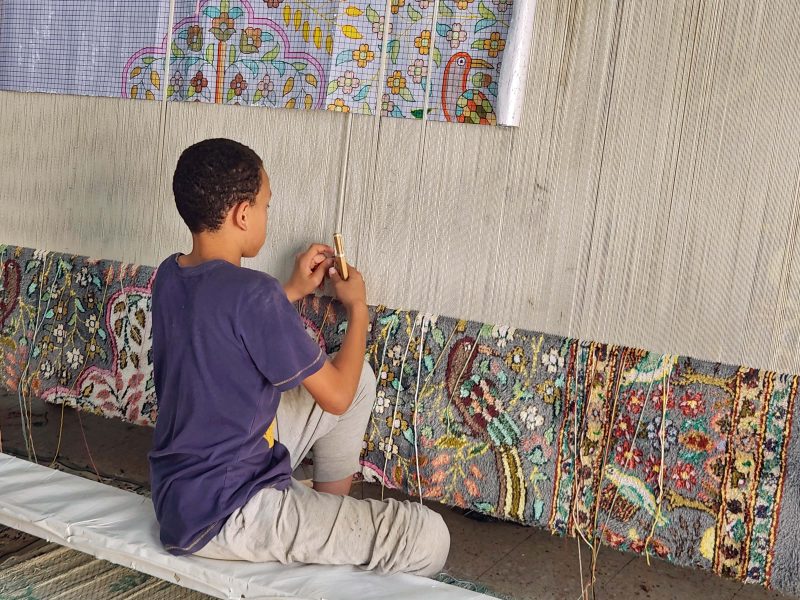
These are some of the beautiful rugs these children weave. Naturally, they were available for purchase.
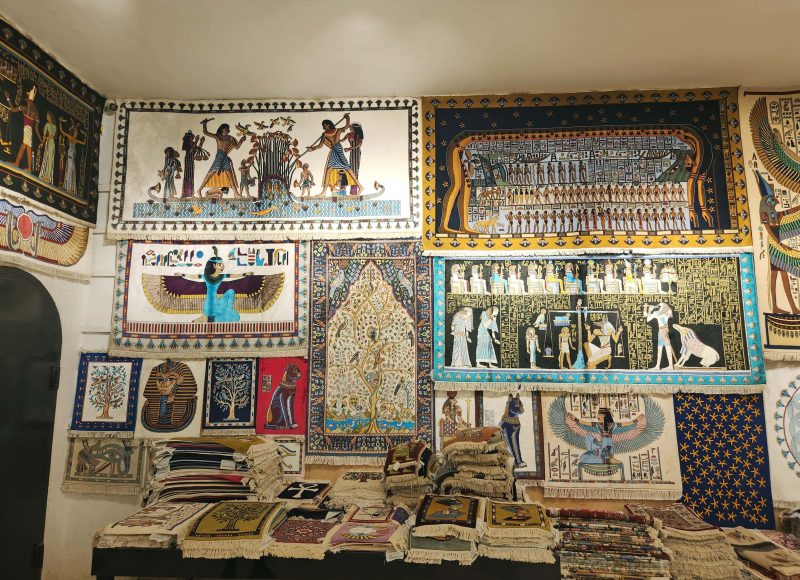
After a delicious lunch, we headed for the highlights of the day: the Great Pyramids and the Great Sphinx. The Great Pyramids of Giza are the last surviving Wonder of the Ancient World. The first sight of them is breathtaking. Pyramids, as I previously mentioned, are tombs. These three pyramid/tombs were built for three generations of Egyptian kings: Khufu, his son Khafre (the statue in the Egyptian Museum with the falcon on his head), and his grandson Menkaure. Some smaller pyramids at Giza were constructed for these kings’ wives and mothers.
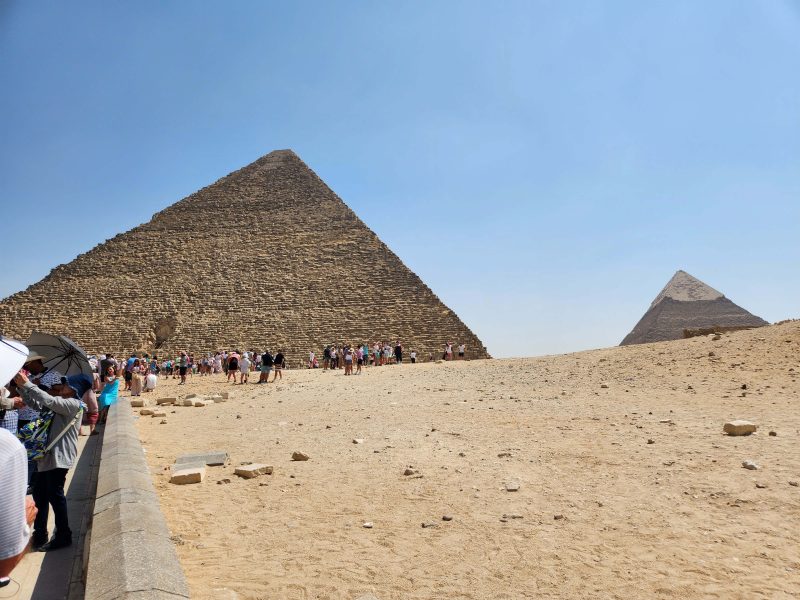
The Great Pyramids of Giza are unbelievably huge and took 27 years to build. The largest was 481 feet tall (about 45 stories) but has lost 31 feet from its top and now stands at 450 feet tall. You can see the flat top where the capstone is missing.
There is consensus that the Great Pyramids were built by paid laborers, not by slaves. Building them required 5.5 million tons of limestone, 8,000 tons of granite, and 500,000 tons of mortar. The granite likely came from Aswan, 530 miles upstream on the Nile. If you’re wondering how many stone blocks are in the largest pyramid, the answer is 2.3 million. (I’m not the one who counted them.) For scale, zoom the photo below to see people climbing on the pyramid below the large hole on its side and standing at its opening.
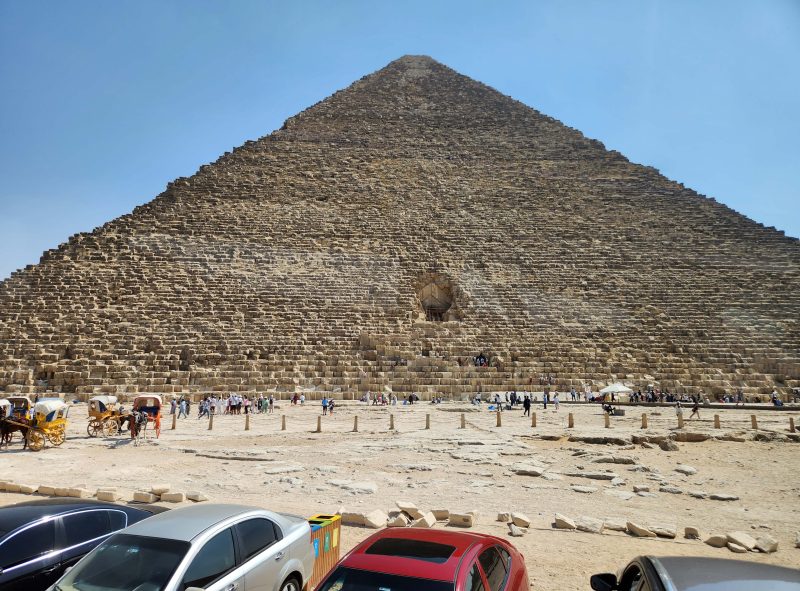
Here’s a close-up of one of the Great Pyramids. The surface used to be covered with limestone to make it smooth, like it is near the top.

Near the Great Pyramids, it was possible to buy a ticket to ride a camel. Several members of our group did that.
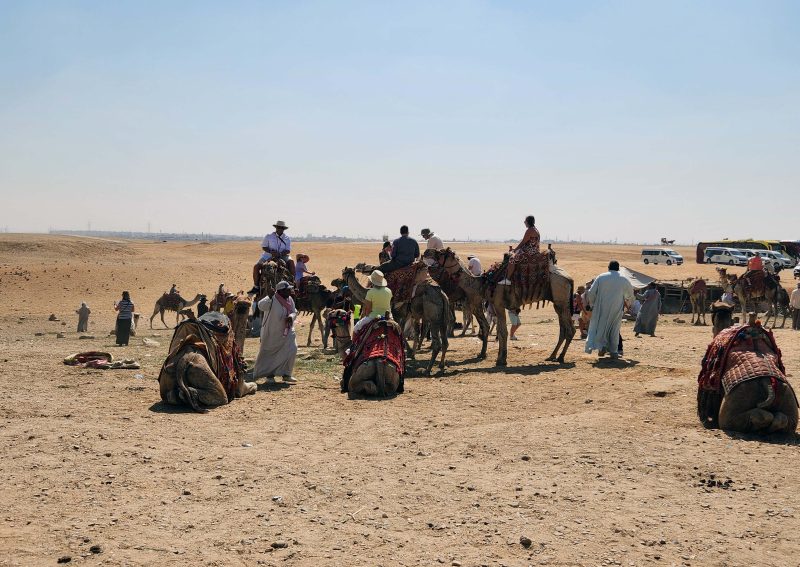
Until I saw it, I didn’t realize that the Great Sphinx was within walking distance of the Great Pyramids. How handy for sightseers!
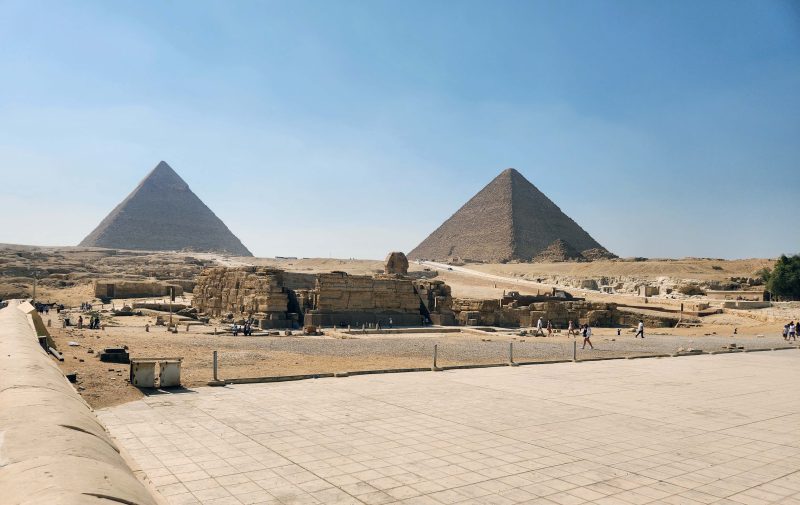
The Great Sphinx was carved from a single piece of limestone. It was built by Egyptian farmers who needed to be fed during the spring months of the annual Nile flooding, hundreds of years before the Israelites (slaves) came to Egypt.
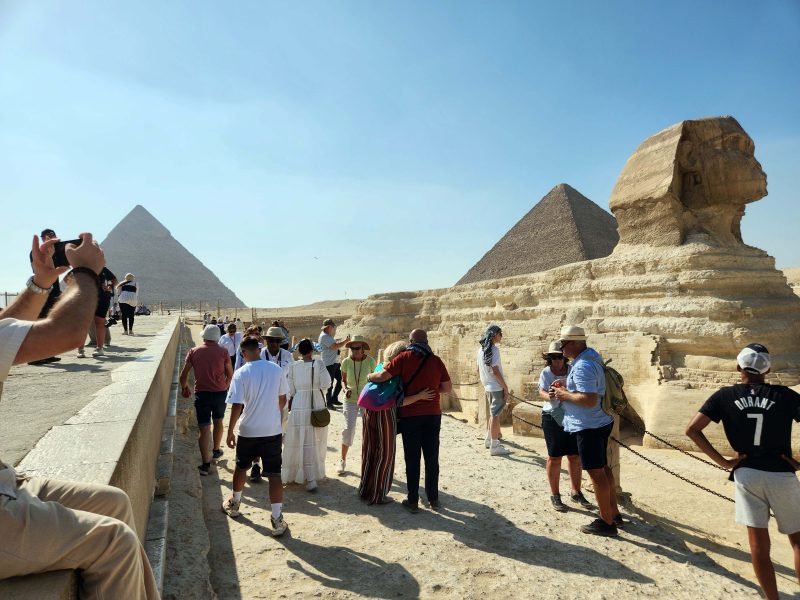
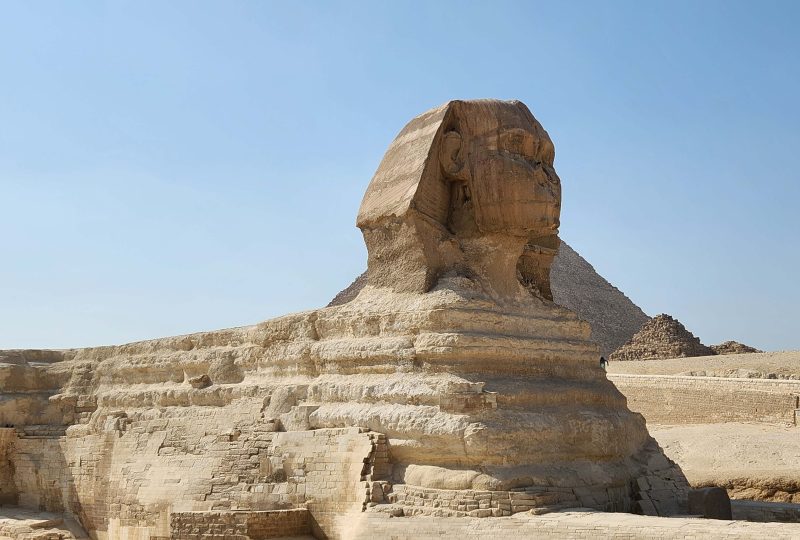

Giza and Cairo are across the Nile River from each other, so we could see Cairo from Giza.

Hanan told us the vendors at the Great Pyramids are extremely aggressive. She advised us to just say “no” and to keep walking. Ted and I can testify to the vendors’ aggressiveness. As we were walking away from the Pyramids to get a better picture of them, a man invited us to join him and his camel, Moses. We said “no,” but then he offered to take our picture with the pyramids. We kept saying “no” as we turned and began walking away from him. At one point, he grabbed Ted’s arm and tried to position it so he could take a photo that would look like Ted’s hand was resting on the top of the Great Pyramid. Things started getting very weird, so we just gave up on taking our picture and walked faster toward where Hanan was waiting. (The vendors get in trouble if they get within a certain distance of a venue.) We turned around at one point and saw the vendor bothering someone else.